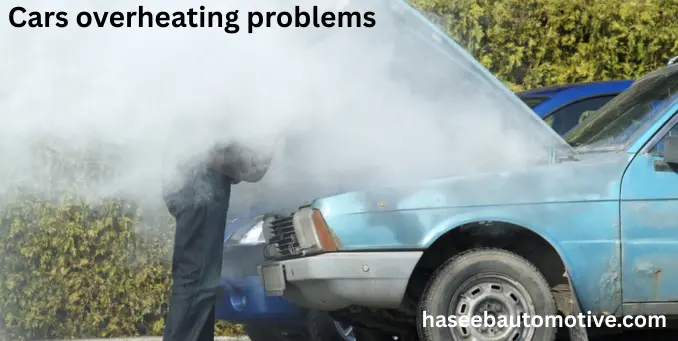What to Do If Your Car Is Overheating?
There’s nothing more stressful than seeing your car’s temperature gauge rise into the red or steam billowing from under the hood. An overheating engine isn’t just an inconvenience—it can lead to serious damage if not handled properly.
So, what should you do if your car starts overheating? Let’s break it down step by step.
Immediate Steps to Take When Your Car Overheats
1. Pull Over & Turn Off the Engine
If you notice the temperature gauge rising or see steam, pull over safely as soon as possible. Continuing to drive can cause severe engine damage.
Turn off the engine immediately to let it cool down.
2. Turn On the Heater (Yes, Really!)
This may sound strange, but turning on your car’s heater can help pull heat away from the engine, lowering its temperature slightly.
Set the heater to maximum and open the windows for ventilation.
3. Open the Hood (Carefully!)
Pop the hood only when it’s safe to do so. This allows heat to escape faster.
Warning: Do NOT open the radiator cap while the engine is hot! The pressurized coolant can spray out and cause severe burns.
Why Is Your Car is Overheating?
Overheating usually happens due to cooling system failure. Here are the most common causes:
1. Low Coolant Levels
Coolant (antifreeze) keeps your engine from overheating. If levels are low, the engine can’t stay cool.
Fix: After the engine cools, check and top off the coolant. Use a 50/50 mix of antifreeze and water.
2. Leaking Radiator or Hoses
Cracks or loose connections in the radiator or coolant hoses can cause leaks.
Fix: Look for puddles under the car. If you find a leak, you’ll need repairs at HaseebAutomotive.com.
3. Faulty Thermostat
The thermostat controls coolant flow. If stuck closed, the engine overheats.
Fix: If your engine frequently overheats, the thermostat may need replacement.
4. Broken Water Pump
The water pump circulates coolant. If it fails, the coolant won’t flow properly.
Fix: A mechanic at HaseebAutomotive.com can diagnose and replace a failing water pump.
5. Malfunctioning Radiator Fan
The fan cools the radiator. If broken, the engine may overheat, especially in traffic.
Fix: Check if the fan is running when the engine is hot. If not, it may need repair or replacement.
6. Clogged Radiator
Dirt, debris, or rust can block coolant flow, causing overheating.
Fix: A radiator flush at HaseebAutomotive.com can clear out blockages.
What to Do After Your Car Cools Down
Once the engine is cool (after at least 30 minutes), follow these steps:
Check Coolant Levels – If low, refill with coolant.
Look for Leaks – Check for puddles under the car or wet spots on hoses.
Restart the Engine – If the temperature stays normal, you may drive cautiously.
Visit a Mechanic – If overheating happens again, book a service at HaseebAutomotive.com.
What NOT to Do When Your Car Overheats
Don’t Keep Driving – This can destroy the engine.
Don’t Open the Radiator Cap While Hot – You could get burned.
Don’t Pour Cold Water on the Engine – This can cause cracking.
Prevent Overheating: Maintenance Tips
Check Coolant Levels Regularly.
Flush the Radiator Every 30,000 Miles.
Inspect Hoses for Leaks or Cracks.
Replace the Thermostat if Needed.
Get Regular Engine Cooling System Inspections at HaseebAutomotive.com
Overheating can be scary, but knowing what to do can save your engine from serious damage. If your car keeps overheating, don’t risk it—get a professional diagnosis at HaseebAutomotive.com today!
Stay cool and keep your engine safe with expert car care from HaseebAutomotive.com!



Leave a Reply